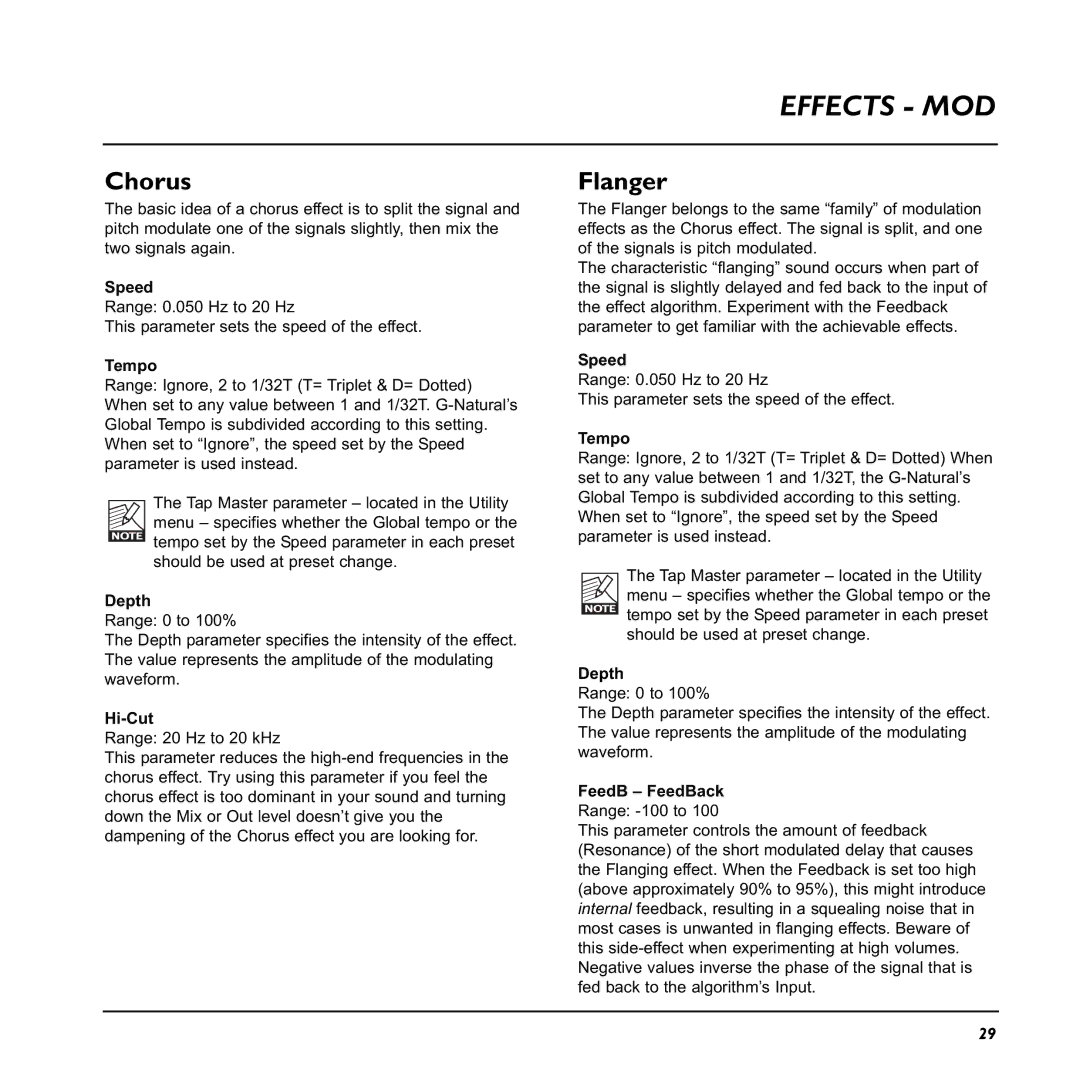
EFFECTS - MOD
Chorus
The basic idea of a chorus effect is to split the signal and pitch modulate one of the signals slightly, then mix the two signals again.
Speed
Range: 0.050 Hz to 20 Hz
This parameter sets the speed of the effect.
Tempo
Range: Ignore, 2 to 1/32T (T= Triplet & D= Dotted) When set to any value between 1 and 1/32T.
The Tap Master parameter – located in the Utility ![]() menu – specifies whether the Global tempo or the
menu – specifies whether the Global tempo or the ![]() tempo set by the Speed parameter in each preset
tempo set by the Speed parameter in each preset
should be used at preset change.
Depth
Range: 0 to 100%
The Depth parameter specifies the intensity of the effect. The value represents the amplitude of the modulating waveform.
Hi-Cut
Range: 20 Hz to 20 kHz
This parameter reduces the
Flanger
The Flanger belongs to the same “family” of modulation effects as the Chorus effect. The signal is split, and one of the signals is pitch modulated.
The characteristic “flanging” sound occurs when part of the signal is slightly delayed and fed back to the input of the effect algorithm. Experiment with the Feedback parameter to get familiar with the achievable effects.
Speed
Range: 0.050 Hz to 20 Hz
This parameter sets the speed of the effect.
Tempo
Range: Ignore, 2 to 1/32T (T= Triplet & D= Dotted) When set to any value between 1 and 1/32T, the
The Tap Master parameter – located in the Utility ![]() menu – specifies whether the Global tempo or the
menu – specifies whether the Global tempo or the ![]() tempo set by the Speed parameter in each preset
tempo set by the Speed parameter in each preset
should be used at preset change.
Depth
Range: 0 to 100%
The Depth parameter specifies the intensity of the effect. The value represents the amplitude of the modulating waveform.
FeedB – FeedBack Range: -100 to 100
This parameter controls the amount of feedback (Resonance) of the short modulated delay that causes the Flanging effect. When the Feedback is set too high (above approximately 90% to 95%), this might introduce internal feedback, resulting in a squealing noise that in most cases is unwanted in flanging effects. Beware of this
29
